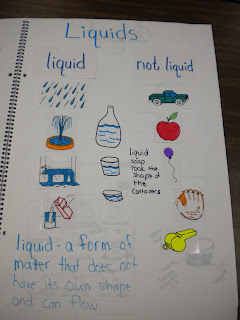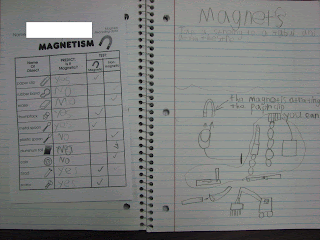One of the most important parts of any classroom is discipline. I have been sitting in on a lot (over 14) interviews lately and realized this is one area that not everyone has thought much about. Thinking back to my first year...I realize why I failed in that area. But I made up for it that second year! Here are a few ideas you might consider and resources you might use with some slight tweaking to fit your style.
This is the classroom discipline note contract I have in each student's binder. I have changed it to where there is a section for the parent and student to sign at the bottom to show me they discussed it at home as well. I just don't have that copy on this computer.
As you can see from my explanation - I see classroom discipline as two parts: rewarding good choices / behaviors, giving consequences to help deter bad choices / behaviors. Many people just look at it as how you punish bad behaviors.
In my class I try to reward individually and as a whole class. So I have coin system and marble jar set up in the room.
The coin system is two-fold. It helps give an immediate reward - the coin and a delayed reward - the prize. I explain to the students that teaching is my job and learning is their job. I get paid to come to school so I will pay them when they come to school. Each student receives a morning coin: payment for coming to 'work.' They also earn coins for good behavior. If one table is working really quietly while the others are goofing off - each student at that whole table can earn a coin. If I notice the students are taking a long time to clean up and transition - I pay the first few students at the carpet a coin. These little incentives tend to point out the behaviors I want and induce the other students to follow suit. Because I want there to be intrinsic motivation as well I do not always hand out coins for every good behavior. I try to give extrinsic and intrinsic motivators. But let's be honest - kids like to get things!

The really good part of the coins (I switched from tokens because of this) is that on bank days the students get to exchange their coins for other coins. They LOVE bank days even though all they are doing is exchanging what they already have in their wallets. By the way - I got the wallets at Oriental Trading and they have lasted me 5 years. If you invest in a BUNCH of pennies and nickels you will be fine. I have a lot of dime and quarters as well, but not having too much keeps me accountable for having bank days and shopping days on a regular basis.
This is a chart we make early on in the year when we do our first bank day. We then add on as the students earn more coins and learn different ways to exchange coins. I also like bank days because they give me a rough estimate of how much money the students have. I change up how much it costs for various items based on how much money they have. If I know one student has been working really hard but only has 7 cents, I am going to try and makes sure he/she can get something to help motivate him/her.

On shopping days (they take about 45 minutes) I have one table at a time come up and purchase items. I have a poster of that too - it helps me from having to re-write it each time. The only thing I do is put different note cards up with different prices. But these are my categories: stickers, pencils, book marks, rainbow carpet (a bunch of random stuff - large Weekly Reader issues, Highlights magazines, posters, etc.), prize drawer (again, a bunch of random stuff but the kids like these prizes more - silly bands, erasers, McDonald's Happy Meal toys, etc.), show and tell (they can do show and tell any time they have 25 cents - this is the only prize like that), and stuffed animals.
Although there are tears sometimes on shopping days, they usually are a happy time. I always try to talk to the student(s) who is sad on shopping day because he/she doesn't have enough to buy a stuffed animal (or whatever) about what he/she can do next time to earn more money. That talk usually comes after the shopping day when the emotions aren't so high and we can talk more calmly about it. This proves fairly effective and gives me insight into what that particular student wants to work towards earning.
One last thing about my coin system - just like students can earn coins, they can lose them too. When we discuss them getting paid to come to 'work' at school we also discuss what happens when people get pulled over for driving too fast. We talk about fines for breaking laws and tie that to fines in class for breaking rules. For example, if the students should be working and someone is off task that student may have to pay me a coin. If a student is not following our morning routine and being disruptive, that student pays a fine. And my favorite...if a student tattles one someone that student has to pay the person he/she tattled on a coin. It only takes one or two times of having to pay another student a coin when you tattle on him/her before you learn!
The marble jar is a whole class reward system. I talk about how teams have to work together and if a team is playing a sport and one person is not doing what he/she is supposed to do then it can cause the whole team to lose. Also, if a team works really well together then that whole team can win. So while we are around the school if someone compliments the class as a whole for standing in line quietly, being polite during an assembly, etc. then the whole class gets to put a marble in the jar. Because each student puts one marble in for each compliment it looks like it fills up quickly. But I have found they fill the jar up 4-6 times a year which is very manageable.
I keep the marble jar close to the door so they see it as we are leaving - just a little reminder that how we represent our class around the school can help us fill that jar.
Because they worked as a team to fill up the jar, we choose as a team what the reward will be. After they have filled it up we sit down and brainstorm possible rewards. With about 5-8 choices on the board we then vote on which one they would like. They know that I have to get approval for the reward first, then send a note home, and then they can get the reward. But I think that is a valuable lesson - we follow chains of command in life. Some of the choices they have decided on have been: PJ day, bonus recess, board game day (really just the end of the day), lunch in the classroom, water day, etc.
This is a sample note I send home when we do get the approval for a reward. I like the parents to know why they have earned this reward since it ties back to my overall discipline.
I know a lot of people like to have their students write the class rules at the beginning of the year. I may get a lot of people upset with me...but I'm not a fan of that. I have the rules set because I am in charge. However, we do spend a lot of time discussing why those rules and there - we act them out, talk about what would happen without them, take pictures of students following the rules, write a class book about the rules. So the students have a lot of discussion and ownership...but I set the rules.
FYI - there are five of them: walk inside, listen when someone is talking, keep hands, feet, and objects to yourself, show respect, do your best. I like the last two because they have a wide range of applications. I love when a student misses a few words on a spelling test and I hear someone comfort him/her by saying, "Remember the rules - you don't have to be perfect, just do your best." So precious!
One final note about discipline - writing a class mission statement (we use a lot of Continuous Improvement) has helped. If a student is acting inappropriately I remind him/her of why we come to school and we discuss if that particular behavior is helping us achieve our goal.



















































